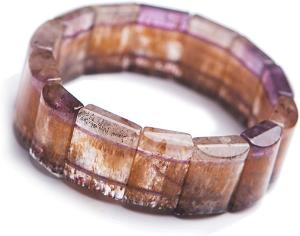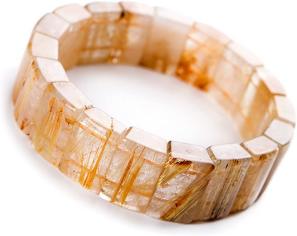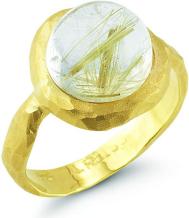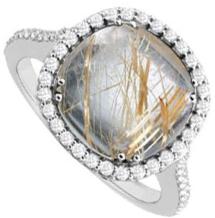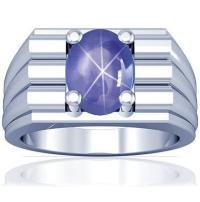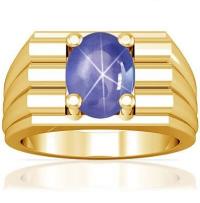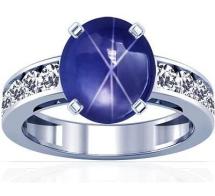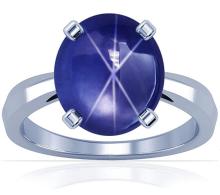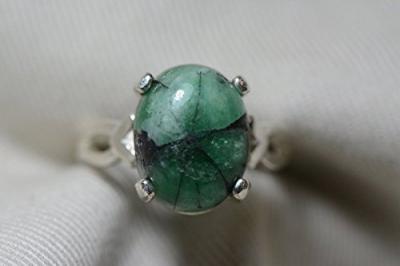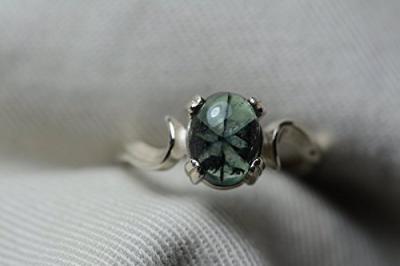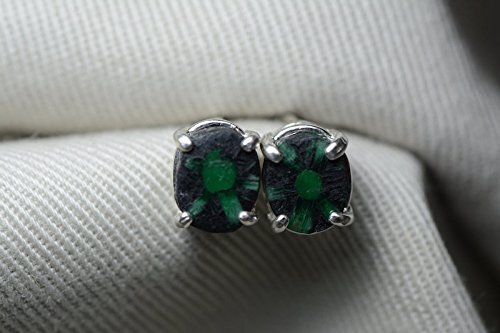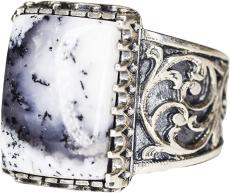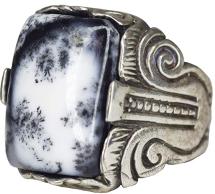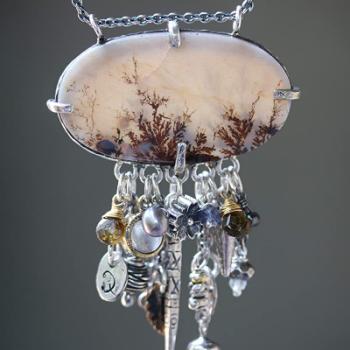Gemstone inclusions play a multi-faceted role in the life of gemstones. They inhabit a fascinating world of their own inside the innards of a gem. Under magnification, they can equal the mystique and majesty of the gem itself.
Inclusions contribute greatly in the identification process of a gemstone. Most precious and semi precious stones occur in all colors of the rainbow. So a gemstone species cannot be identified on the basis of color alone. Surely, a number of yardsticks are used to identify the gem type and yet inclusions are an important criterion for the purpose.
Furthermore, inclusions are different even in the same gemstone species originating from different geographic locations. Thus, they are very useful to determine the geographic origin of gemstones.
Determination of geographic origin of gemstones is crucial in case of certain gemstones as gems from particular locations carry a lot of prestige and value. Well known examples of this phenomenon are Sapphires from Kashmir, Rubies from Burma (now Myanmar) and emeralds from Columbia.
Also, natural gemstones carry inclusions that are different from their synthetic counterparts of the same species. So they are of immense help in distinguishing natural stones from synthetic ones.
So what are Gemstone inclusions?
In simple words, inclusion is any foreign material that is captured and entombed inside a gemstone while it is still forming. The environment where a gem forms, develops and grows is a far cry from the sanitized backdrop of a lab. The stone maturates in the sordid high temperature, high pressure regions deep inside the womb of mother earth.
While the constituting mineral is mutating into the rough gem, it ambushes other minerals within itself. Solid, liquid or gas, whatever is in close vicinity is entrapped and embalmed inside the gemstone rough. These mix-ups happen in minuscule quantities. Encapsulated in this manner, these trace impurities frozen in time end up as inclusions of the gemstone. Hence, inclusions are considered to be the visible traces of a mineral’s genesis.
As such, no two gemstones are alike. Each stone displays its unique signature inclusions. The singular impregnation give each gem its character and colors. The color playfully varies in saturation, hue and tone. Nevertheless, the ideal color is the one you fall in love with.
As newer gems and newer sources of gemstones are continually being discovered, so are newer varieties of inclusions also being discovered. So the list of inclusions is never complete.
Types of Gemstone inclusions are classified in two ways. Firstly, they are classified based on the time of coming into existence during the life of a gemstone. Protogenetic inclusions form before the formation of host crystals. Syngenetic inclusions form simultaneously with the host. And epigenetic inclusions form after formation of host crystals.
Secondly they are classified based on what the inclusions actually are.
Solid Inclusions: At extremely high temperatures, gem crystals have more volume and more defects due to expansion. The crystal structure is more capable of absorbing impurities. As the crystal cools, it contracts and corrects many of these crystalline defects. As such, the impurities absorbed earlier are ejected inside the crystal. The space inside the solid host is inadequate. Hence, the impurity atoms are forced to form crowds of nano-needles and fine-fragments in directions permitted by availability of space. These are solid inclusions.
Some of the better known solid inclusions in gemstones are as follows
Rutile Gemstone Inclusions:
Rutile is a naturally occurring mineral and is mainly made up of Titanium Dioxide (TiO2). It is strongly inclined to form needle-shaped inclusions inside other minerals. More so in quartz. Such rutile bearing quartz crystals are known as rutilated quartz.
Click On The Images
Click On The Images
Rutile inclusions are responsible for the chatoyancy on Chrysoberyls or asterism effects on gemstones like the star Ruby and Star sapphire.
Gemstone Ruby crystals are also typically impregnated with rutile. When tight groups of these needles intersect inside the gem they are termed as silk. The needles might be slender and long or short. They might also appear to be woven tightly together.
Magically, from the depths of mineral crystals, stars shine and cat’s eyes gleam.
Tiny needle shaped crystals that grow within larger crystals cause these optical effects. Light reflects off the needles, which are commonly crystals of the mineral rutile, Depending on whether needles grew in three directions or one, the result is a star or cat’s eye. To highlight the effect, a gem must be cut as cabochon and in the correct orientation.
Chatoyance requires a profusion of silk inclusions in the gemstone. Light diffusing from these inclusions shapes a thin band across the surface of the gem. The band is popularly known as the cat’s eye. Needle-like crystals of hematite & rutile aligned with a crystallographic axis parallel to the base are recognized for producing a cat’s-eye in many specimens.
Petite rutile needles in gems also produce another valuable optical phenomenon known as asterism. Such gems are known as star gems. Asteriated gems are highly sought after and command a higher value than their non-asteriated siblings. Celebrated star gems include star Ruby and star Sapphire. These magnificent gems show a sharp six-rayed star which slides along majestically across the surface of the gem as the light moves or the stone is rotated. The star is best perceptible when seen in a solitary light source such as sunlight.
Click On The Images
Click On The Images
In the case of Sapphires, these rutile needles can sometimes create the sought-after sleepy transparency and increase the value of the stone.
Black Shale Gemstone Inclusions:
An eye-catching example of black shale inclusion occurs in trapiche gemstones which is prominintly seen in trapiche emeralds. This unusual gem is almost exclusively found in the Muzo mining district of Colombia.
Click On The Images
It’s distinctive signature characteristic is the ray-like inclusion originating from its center in a hexagonal pattern resembling the spokes of a wheel. The phenomenon is caused by coal-like shale inclusions that happen to form in the wheel-spoke pattern. Trapiche is the Spanish word for the cogwheel used to crush sugarcane.
1.51 Trapiche Emerald Earrings, Emerald Cabochon Stud Earrings In Sterling Silver Appraised
Click On The Image
Extremely rare cases of non-Colombian trapiche emerald crystals have been seen in the Brazilian state of Goiás and Mananjary area in Madagascar.
Other gems that occasionally display trapiche property are rubies, tourmalines, chiastolites, and garnets.
Hematite Gemstone Inclusions:
Hematite is also known as haematite. The name stems from the Greek word for blood.
It occurs in many formations inside the quartz crystal. Deep blood-red crystals, neat columns of hexagonal platelets, radiating needle-like patterns or thread-like filaments are some of the strains of Hematite manifestations.
Dendritic Gemstone Inclusions:
These are fern-like inclusions of iron, manganese, or other metallic oxides known as dendrites. They are seen in Quartz and Agate and make intricate vegetal patterns on the surface of the gemstones. They look like hand painted calligraphy sketches but are in fact completely natural phenomena.
Click On The Images
Beautiful tree in dendritic quartz in sterling silver prongs setting with aquamarine gemstone on the side with silver chain necklace
Click On The Image
Halo or Disk-like inclusions:
When zircon crystals grow inside the host gemstone they cause fractures in the crystalline structure of the host. This happens because the two crystals have different thermodynamic and chemical properties. These fractures assume the shape of discs and are referred to as halos. Disk-like inclusions are seen in sapphires, garnets and peridots.
The reflective, disk-shaped inclusions seen in natural Peridots are imaginatively called “lily pads.” A lily pad proves that a peridot is natural.
Solid inclusions can also include pyrite deposits found in lapis lazuli and green mica deposits in aventurine.
Crystals:
A crystal inclusion is an included crystal of any other mineral specimen or that of the host mineral itself.
It can be a pre-existing crystal entrapped by the growing host crystal. This is an example of an Antegenic Inclusion. It could have grown on the wall of a cavity in the host crystal.
It could be born out of crystallisation of liquid or gaseous chemicals trapped inside the host crystal.
Sheaves:
These inclusions composed of the mineral cacoxenite (iron aluminium phosphate) are seen in gemstone amethyst. They are a collection of yellow sheaf-like crystal groups.
Bubbles:
These are actual bubbles of different sizes and shapes seen inside the gem. And the bubbles could be either liquid or gaseous bubbles.
A liquid can get caught within the growing crystal at any stage of growth. It can even seep into the crystal after completion of growth. In some instances, the liquid is catalyzed when part of the host crystal or an included mineral dissolves chemically. You should note that bubbles are often a clue to synthetic gemstone or cheap glass imitation.
Cleavage Fault:
Cleavage fault is not an inclusion of a foreign body inside the gem. It is in fact a straight crack in a gemstone’s cleavage plane. It is manifested in diamonds, topaz, kunzite & feldspar.
Virtually all gemstones are crystals displaying well defined crystalline structure. One inherent feature of crystals is that they have cleavage. It is the susceptibility of a crystal to break cleanly along distinct planes.
Feather:
‘Feather’ is a general term for fissures that might exist in a gemstone. These are shattered hairline cracks within the stone that resemble feathers. Small feathers do not usually threaten the gemstone’s structure unless they rise to the surface on the top of the stone, where they are prone to accidental blows.
Flakes:
Green aventurine quartz is actually colorless quartzite. Tiny flakes of green fuchsite mica present in the crystal imparts the color.
Color Zoning:
Color zoning alludes to the uneven distribution of color throughout the body of the gemstone. Largely, this is a negative trait since consistency of color is a highly desired gemstone quality.
But some gemstones with highly defined color zoning become valuable for this quality. Ametrine and multicolored tourmaline gems like watermelon tourmaline fall in this category. Ametrine is a hybrid of Amethyst and Citrine within the same crystal. It is a result of differing oxidation states of iron within the crystal. Temperature difference across the crystal during its formation causes this to happen.
Geological conditions keep changing from the time a gemstone starts to form till the time it primes. Availability of coloring trace elements known as chromophores changes overtime. Extent of chromophore quantity across the body of the crystal may also differ. Also, there might be a temperature gradient across the gem. It causes uneven ‘cooking’ of the chromophore. All these factors lead to color zoning in the gemstone.
Gems like peridot and topaz are not colored by chromophores. Consequently, they rarely display color zoning.
Rain:
These are ethereal dashed patterns akin to raindrops and rain-like structures looking like comets.
Twinning:
This inclusion is oftentimes found in rubies and Sapphire. It is considered to be evidence of genuineness of the gemstone. It looks like cracked parallel planes.
Crystal twinning occurs when two separate crystals share some of the same crystal lattice points in a symmetrical manner. The result is an intergrowth of two separate crystals in a variety of specific configurations. Gemologists use the type of twinning seen in a gem as a diagnostic tool in mineral identification.
Veil:
Veils are small inclusions arranged in layer structures that look like bubbles. These inclusions can be wispy, flat or curvaceous.
Synthetic gems contain inclusions specific to their method of growth. These include translucent to opaque coloring, coarseness, and a web-like appearance. Such inclusions contrast starkly with the natural, transparent, partially healed fracture “fingerprint” inclusions.
For example, translucent to opaque-white to yellowish granular-looking flux are types of inclusions you would typically find in a flux-grown synthetic stone.
How Gemstone Inclusions Influence the Clarity Grade and Value of a Gem:
Gemstone Clarity is an important value-determining-factor for a gem. We know that lapidaries cut gems to make them sparkle. Furthermore, a skillfully given cut also enables gems to flaunt their colors in interesting ways. Existing flaws in the gem-body obstruct this sparkle and the gem becomes dull.
As such, the value of a gem is directly proportional to the quantum of clarity. Higher the clarity, the higher the value and lower the clarity the lower the value of a gem. At the same time, clarity is inversely proportional to the sprinkling of inclusions in the gem. More inclusions mean reduced clarity.
Value Adding Inclusions:
Then again, certain inclusions might actually add to the value of a gemstone. Epitomes of such inclusions are the minuscule light-diffracting inclusions in Kashmir sapphires. They enhance color uniformity by tossing light into regions where rays would not be able to reach on their own. This suffusion of light imparts the highly coveted velvety appearance to Kashmir sapphires, adding immense value.
Another example of such invigorating inclusions are the rutile needles in corundums. When properly oriented, they induce an optical property called asterism into the gem. They reflect light in such a way that a moving star appears and glides across the top of the stone. Such gems are the insanely desirable star gems.
Rutile inclusions are responsible for the chatoyancy of Chrysoberyls and also for creating rutilated quartz.
The effect of clarity on gem sales: Your focus should be on the Positives:
Customers rightly ask about the “flaws” and “imperfections” of a gem before making a buy. If you are a seller, you should be mindful of the words you use to describe the inclusions. You should be truthful and honest, but you should mind your wording.
Inclusions is a better word than deficiencies. The French term ‘jardin’ meaning garden is a still better word for describing inclusions in an emerald.
Make it amply clear that naturally occurring gems are almost never inclusion-free. Elucidate that the natural environments and processes that form any gem invariably incorporate inclusions into it. Though incredibly rare, flawless gems do exist. But flawlessness usually casts a shadow of suspicion. The gem could have been artificially created in a lab. Or worse, it could be a fake.
Expound the benefits of inclusions. No two gemstones are alike because of the presence of inclusions. They add individuality and character to the gem.
Your patrons will be glad to know that gemologists identify gems by looking at inclusions. For instance, the reflective, disk-shaped inclusions seen in natural Peridots are imaginatively called “lily pads.” A lily pad proves that a peridot is natural. Conversely, the presence of bubbles and swirl will establish that the so-called peridot is in fact a plastic and glass imitation.
Some Shoppers will be seduced by the Budget-benefit associated with inclusions. If they are willing to accept minute imperfections like a small blemish or eye-clean inclusions they can often get more carat weight and better color for the same amount of money.
As you enumerate the benefits of inclusions, also educate your customers about the bad inclusions, namely fissures, fractures and parting. Such inclusions can affect the integrity of the gemstone particularly if they are surface-reaching.
